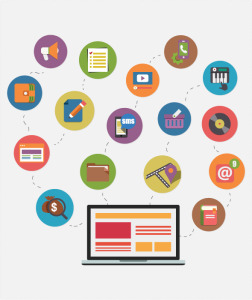Until recently, no one talked about “customer experience marketing.” Today, it’s a bit more common among analysts and vendors, but it remains vaguely defined among those who run marketing campaigns. The term sounds nebulous but is important — akin to “big data” a couple of years ago. Experience marketing is much more than a buzzword, though; it’s the future of creating a sustainable business.

The customer experience transcends a single channel.
Experience marketing involves gathering everything you know about a person who interacts with your brand, across every channel, then using a common set of metrics to predict what this particular person wants next. This knowledge allows marketers to plan online and offline campaigns around specific touch points that connect into a holistic brand experience. It’s a win-win: your customer gets treated like a person rather than an anonymous visitor, and in return, they come to trust your brand.
Here are three predictions for how customer experience marketing will evolve in the coming year:
- The CMO and the CIO become allies. As customer experience becomes a key differentiator for businesses, marketing and IT must work together to facilitate this shift while measuring and reporting their results. In a data-driven world, marketing analytics rely on a strong integration with IT infrastructure. We’re seeing IT budget shift toward experience-oriented capabilities under the CMO. To stay aligned, IT and marketing leads need to communicate early and often, share goals, and create joint timelines. CIOs must become more aware of marketing campaigns, and CMOs must focus on customer experience metrics. With a marketing-IT partnership, the left and right-brained sides of the business can collaborate to create more thoughtful customer experiences.
- A single view of the individual that evolves over time. In 2015, marketers will realize they need a solution that provides a unified, 360-degree view of the customer rather than bits and pieces from different systems. As companies gather holistic data about their customers and act upon it, they’ll minimize the amount of time people spend searching for information and browsing irrelevant products. They’ll improve their service and raise expectations. They’ll become more like the companies we admire for their exceptional experiences, among the likes of Amazon and Netflix, who serve their customers content based on your personalized browsing and buying history across channels. They’ll provide useful and personalized content rather than irrelevant ads.
- Customers for life. Acquiring customers, driving conversions, increasing brand awareness — these marketing goals aren’t going away. But driving customer loyalty, encouraging advocates, and building customers for life will become the primary focus for brands looking to outlast the competition. This means focusing on customer experience and embodying the buzzword that’s really not a buzzword anymore.
The technology to accomplish sophisticated customer experience management exists today. While some organizations fear breaking down their existing processes and replacing legacy systems with a new solution, a single system can provide a 360-degree view of the customer rather than a mismatch of different datasets and disparate information. Some companies are beginning to see the benefits of combining customer data into one place — and this trend will only continue as data proliferates.
This article was syndicated from Business 2 Community: 3 Ways Customer Experience Marketing Will Evolve
More Sales & Marketing articles from Business 2 Community:




